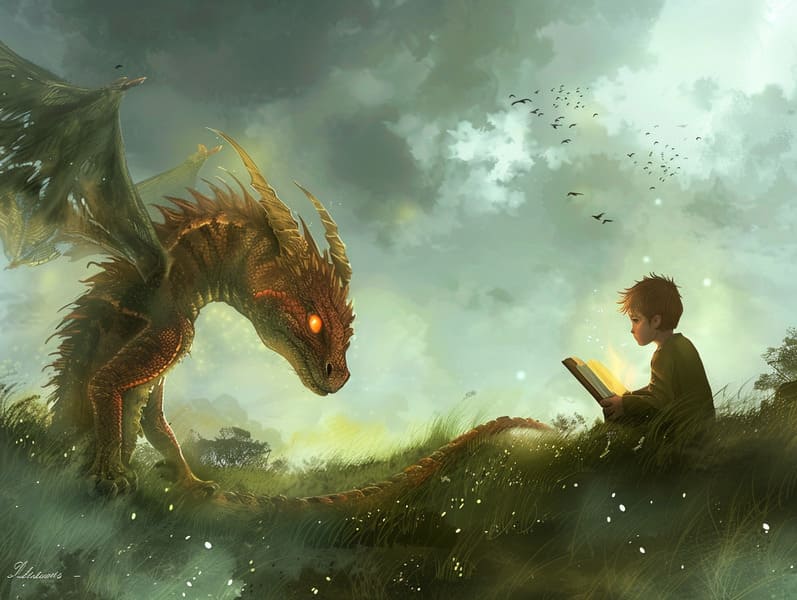
Popular fairy tales have historical significance. These tales have been spoken from one generation to the next centuries before they were ever inscribed. They were born from a variety of civilizations, including Indigenous traditions. They were initially disseminated among elders, often carrying themes and messages aligned with the societal norms and beliefs of the time.
Jacob and Wilhelm Grimm, Jacob and Wilhelm, were among the first to collect many of these beloved stories. Their compilation, "Grimm's Children's Stories," included tales like "The True Bride," "Little Brother and Little Sister," and "Snow-White and Rose-Red," which have since become pillars in the world of famous fairy tales. Similarly, the Danish author's fantastical narratives, such as "The Sea Maid," and "The Little Duckling," have stolen hearts worldwide, cementing their place in the pantheon of famous fairy tales.
Though they are old, these tales remain as important as ever, especially as children's night stories. These fantastical tales are now available in diverse formats, including colorful picture books, enchanting animations, and online storybooks.
Their continued relevance can be attributed to several magical reasons:
Important Morals: Traditional fairy tales often impart important moral lessons. Tales like "The Story of the Boy Who Cried Wolf" teach the merit of integrity, while "The Tale of the Tortoise and the Hare" show the benefits of determination and humbleness. These tales offer kids clear distinctions between moral and immoral, helping to shape their moral compass in a kind yet important way.
Empathy and Awareness: Old fairy tales frequently include beings facing trials and tribulations, encouraging readers to relate with their struggles and champion their triumphs. For instance, "The Story of Beauty and the Beast" highlights the benefit of valuing inner qualities to realize the inner spirit of a individual, developing awareness and discernment.
Cultural Comprehension: Many ancient fairy tales are deeply embedded in the cultural contexts from which they sprang. Discovering these stories can provide fascinating glimpses into different customs, nurturing a sense of international awareness and comprehension.
Fantasy and Imagination: The mythical elements in timeless fairy tales—magical beings—spark children’s creative thoughts. These stories transport readers to otherworldly realms, fostering innovative dreams and a sense of marvel that lasts a lifetime.
Traditional fairy tales are not only entrancing but also educational. They act as spellbinding tools in developing various cognitive and affective skills in kids. When fairy tales are recited, they advance communication skills by teaching new language items and complex sentence structures. This practice also improves auditory perception and mindfulness, as young ones focus on every detail, prepared to see what happens next.
Furthermore, debating the themes and characters of old fairy tales can sharpen problem-solving abilities and problem-solving abilities. Young ones are taught to detect patterns, expect results, and realize cause and effect. These explorations also assist young click here ones reveal their thoughts and feelings, cultivating their emotional intelligence.
In today’s digital era, the proliferation of web-based fairy tales has made these fairy tales more within reach than ever. Internet sites and digital apps feature ample collections of classic fairy tales that can be read or played anytime, anywhere. Fairy tales voiced are particularly in demand, presenting an interactive way for the young to appreciate these charming stories. Read-aloud stories and read-out-loud videos bring characters and settings to life, often complemented by bewitching musical scores and tunes that enrich the narrative adventure.
The persistent attraction of old fairy tales lies in their ability to adapt to modern times while keeping hold of their core values. Contemporary reimaginings of these stories often feature more multicultural protagonists and modern settings, making them meaningful to today’s audience. However, the essential messages of braveness, goodness, and even-handedness remain unchanged, continuing to touch young listeners of all ages.
Traditional fairy tales also offer a sense of serenity and homeliness. They present a organized narrative with a recognizable beginning, middle, and end, often coming to a close with the settlement of conflicts and the triumph of goodness over badness. This dependability can be soothing for kids, giving a sense of steadfastness in an shifting world.
Traditional fairy tales continue to bewitch and enlighten new generations, maintaining their radiance and importance in modern society. As nighttime stories for kids, they grant a perfect blend of allure and teaching, sustaining moral values, empathy, and creativity. The prevalence of web-based fairy tales and the widespread nature of fairy tales recited secure that these classic tales remain available to new generations.
By safeguarding and imparting these tales, we continue to revere the rich tapestry of storytelling and cultural heritage. Whether you are experiencing a gorgeously illustrated book, discovering a electronic collection, or listening to an sound book, the captivation of timeless fairy tales is always within reach. These tales emphasize of the immortal spell of stories and its ability to hold us together across time and space.
Even if you are perusing a gorgeously illustrated book, experiencing a virtual collection, or listening through an spoken story, the elegance of Grimm's fairy tales is always within reach.
These narratives teach us of the unchanging magic of stories and its ability to gather us across epochs and places, casting a charm that delights and instructs alike.